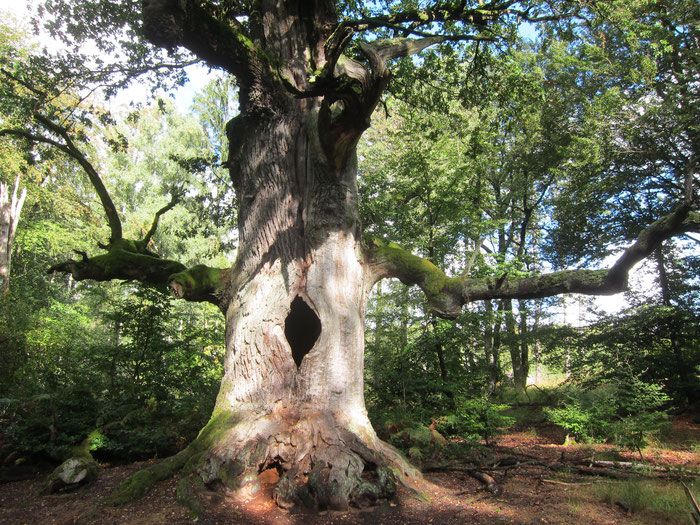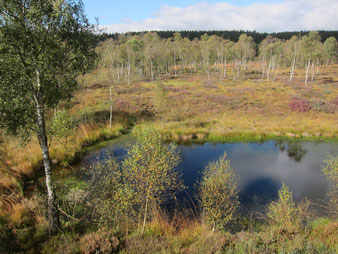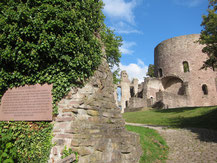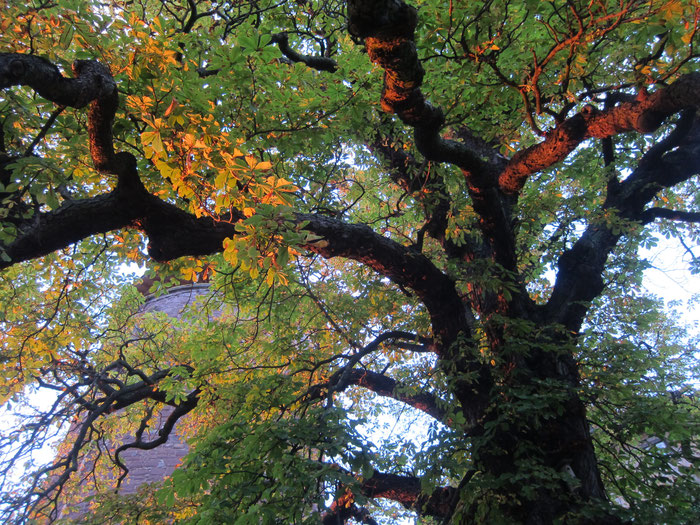Illuminated by the low, but warm autumn sunlight, this forest exudes a sublime atmosphere. I feel like moving back in time, to an age when Central Europe has not yet been completely converted into a “cultivated” landscape. Giant oak and beech trees, several times the diameter of the ones we usually get to see. Dead standing trees and fallen trunks on the ground, slowly being converted to soil. The soil densely covered by fern. And the most majestic phenomena: the still living upper branches of some already decaying stems.
Is this the way this place has always been looking like? Have I found the perfect natural forest in these latitudes? Not really, since even this magical forest is the product of human intervention. But it’s more or less on its way to a near-natural forest again, after being protected back in 1907 already. Before it used to be what is called “Hutewald” here, a wood pasture where animals have been grazing in open woodland landscapes. The low competition between the trees growing wide apart from each other is one reason for their unusual size. Some of the oak trees have reached an age of up to 600 years, while beech trees got more than 400 years old.
The overwhelming majority of Germany used to be covered by mixed beech and oak forests before industrialization. Sadly, not a single hectare of completely pristine forest can be found in entire Germany, or, to be precise, in whole Central Europe today. However, there are efforts to allow the natural development of forests again in some isolated spots. The so-called “Urwald Sababurg” can be regarded as a flagship project. It is located in the low mountain range of the Reinhardswald in the very north of the federal state of Hesse. Nearby, another relict of near-natural forest exists, protected in the hardly known “Urwald Wichmanessen”. In contrast to Sababurg, no foot paths cut through this relatively small area. On the other hand, still today small forest areas are used for wood pasture in the surroundings, for example the Hutewald close to the hamlet Nienover in the Solling mountains.
In the beginning of the 19th century, the Brothers Grimm have found inspiration in the magic of the Reinhardswald for their collection of fairy-tales. Local castles have been the scenes for some of those fairy-tales and are worth a visit, including “Dornröschen’s” castle in Sababurg, “Rapunzel’s” tower in Trendelburg castle, and the Krukenburg in Helmarshausen. Other nearby attractions are the historic townscape of Hann. Münden, the upland moor Mecklenbruch in the Solling mountain range, and the castle in Wülmersen.















There are no comments yet.